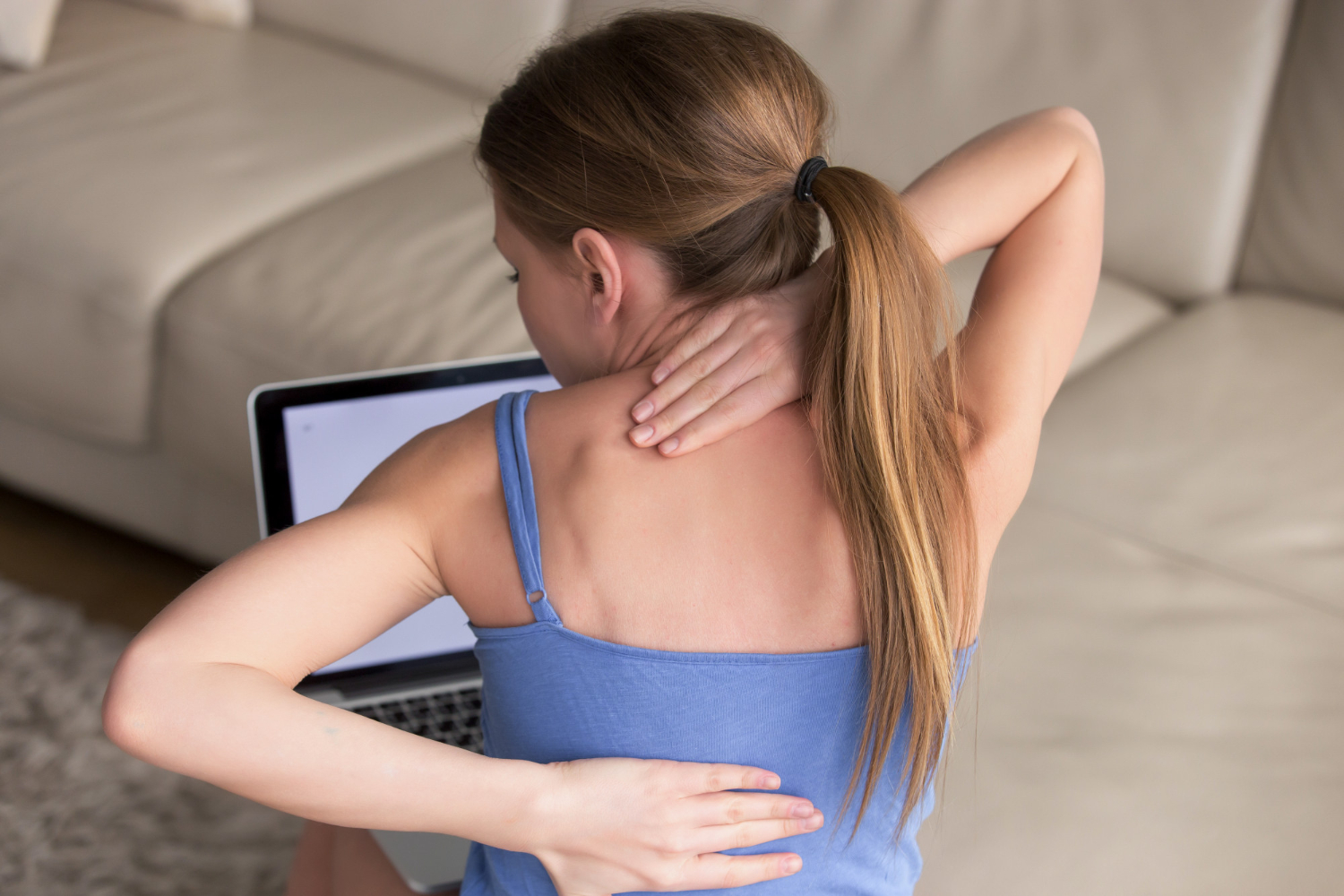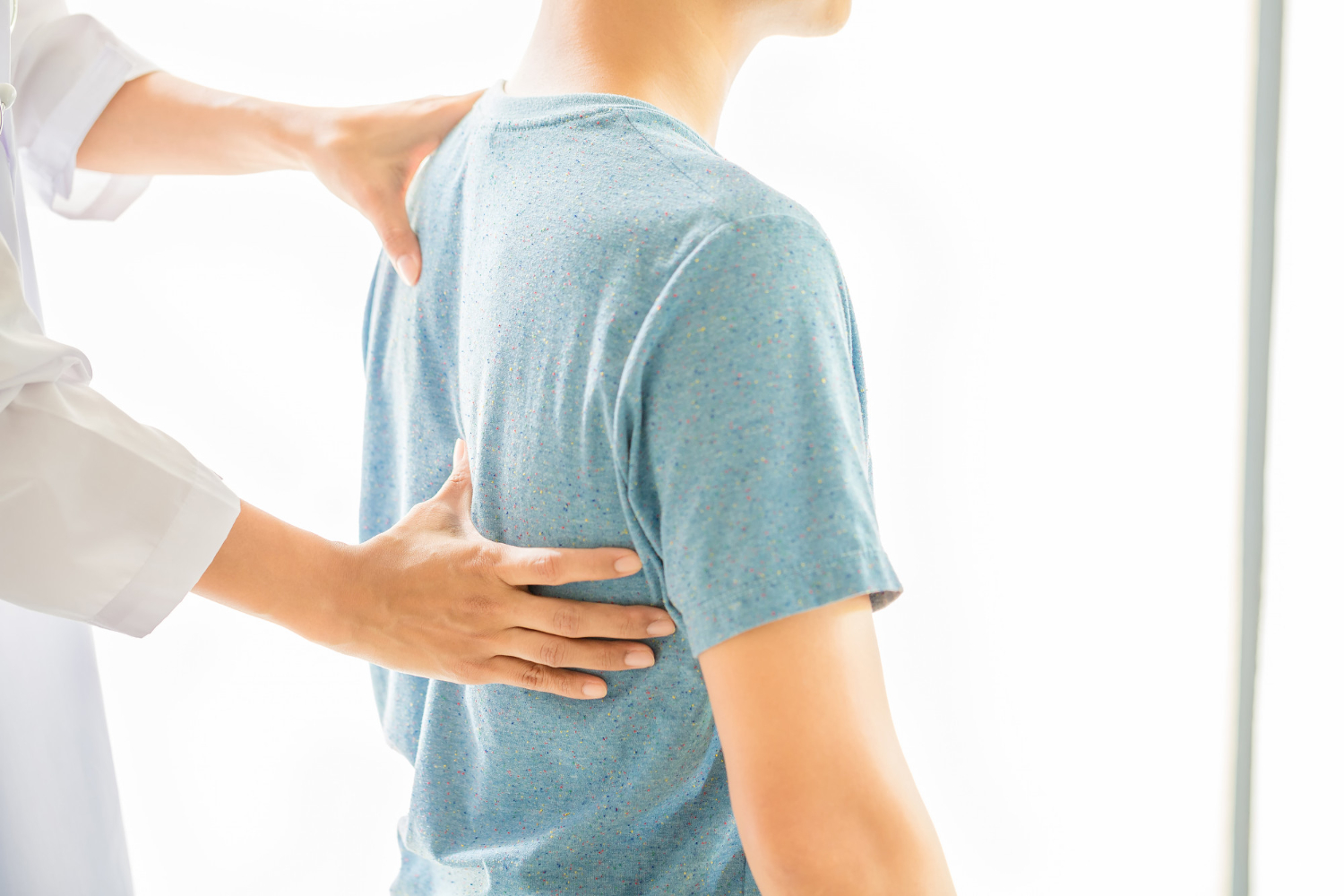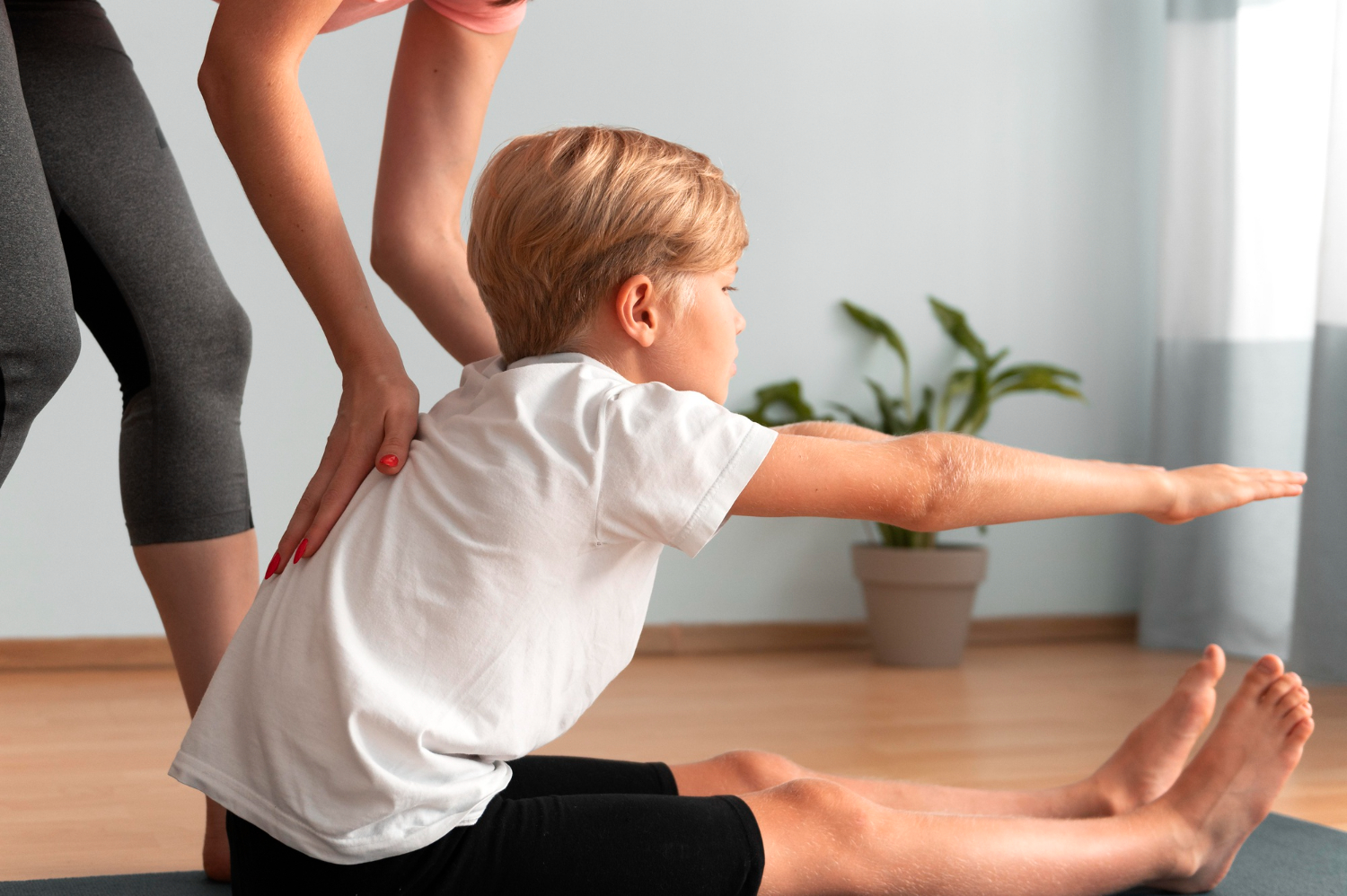Definition / Description
Scoliosis is an abnormal lateral curvature of the spine. It is most often diagnosed in childhood or early adolescence.
Scoliosis can be classified by etiology: idiopathic, congenital, or neuromuscular.
Idiopathic scoliosis
Classified into the following subgroups:
- Infantile scoliosis: Infantile scoliosis develops at the age of 0–3 years and shows a prevalence of 1 %.
- Juvenile scoliosis: Juvenile scoliosis develops at the age of 4–10 years, comprises 10–15 % of all idiopathic scoliosis in children, untreated curves may cause serious cardiopulmonary complications, and curves of 30 degrees and more tend to progress, 95 % of these patients need a surgical procedure.
- Adolescent scoliosis: Adolescent scoliosis develops at the age of 11–18 years, and accounts for approximately 90 % of cases of idiopathic scoliosis in children.
Congenital scoliosis
- Results from embryological malformation of one or more vertebrae and may occur in any location of the spine.
- The vertebral abnormalities cause curvature and other spine deformities because one area of the spinal column lengthens at a slower rate than the rest.
- The geometry and location of the abnormalities determine the rate at which scoliosis progresses in magnitude as the child grows
- As these abnormalities are present at birth, congenital scoliosis is usually detected at a younger age than idiopathic scoliosis.
Neuromuscular scoliosis
- Encompasses scoliosis that is secondary to neurological or muscular diseases.
- Includes scoliosis associated with cerebral palsy, spinal cord trauma, muscular dystrophy, spinal muscular atrophy, and spina bifida.
- This type of scoliosis generally progresses more rapidly than idiopathic scoliosis and often requires surgical treatment.
- Injuries and infections to the spine can also contribute to the cause of scoliosis
Characteristics / Clinical Presentation
There are several signs that may indicate the possibility of scoliosis.
- Sideways curvature of the spine
- Sideways body posture
- One shoulder raised higher than the other
- Clothes not hanging properly
- Local muscular aches
- Local ligament pain
- Decreasing pulmonary function is a major concern in severe progressive scoliosis.
Diagnosis
- Scoliosis is usually confirmed through a physical examination, an x-ray, spinal radiograph, CT scan or MRI.
- The curve is measured by the Cobb Method and is diagnosed in terms of severity by the number of degrees. See link
- A standard exam that is sometimes used by pediatricians and in grade school screenings is called the Adam’s Forward Bend Test.
Examination
The aim of the functional examination is to distinguish between faulty posture and actual idiopathic scoliosis
- Examination of the active movements (flexion, extension, and side flexion) of the spine in the cervical, thoracic, and lumbar segment.
- The Adam forward bend test can be used to make a distinction between structural scoliosis or non-structural scoliosis of the cervical to the lumbar spine. The test can be performed in the standing and sitting position.
- The Cobb angle is a standard measurement to determine and track the progression of scoliosis.
The scoliometer is an inclinometer designed to measure trunk asymmetry or axial trunk rotation. It’s used in three areas:
- Upper thoracic (T3-T4)
- Middle thoracic (T5-T12)
- Thoracolumbar area (T12-L1 or L2-L3)
Risser’s Sign is a measure of the growth left in the spine – this may help to determine the potential for the progression of scoliosis.
Grading (based on iliac crest divided into 4 quadrants):
- Risser 1: 25% iliac apophysis ossification Anterior Superior iliac spine (anterolateral) Seen in prepuberty or early puberty
- Risser 2: 50% iliac apophysis ossification Ossification extends halfway across the iliac wing Seen immediately before or during a growth spurt
- Risser 3: 75% iliac apophysis ossification. Indicates slowing of growth
- Risser 4: 100% ossification, with no fusion to the iliac crest. Indicates slowing of growth
If Risser is a 0-1 grade, with Cobb’s angle 20˚, the risk of progression is 22%, but if Risser is a 2-4 grade with the same curve, the risk of progression is 1.6%. If Risser is 0-1 grade, Cobb’s angle 20-29˚, the risk of progression is 68%, but with the same curve Risser is 2-4, then the risk of progression is 23%.
Medical Management / Treatment
Scoliosis treatments vary, depending on the severity of the curve. Children who have very mild curves usually don’t need any treatment at all, although they may need regular checkups to see if the curve is worsening as they grow.
Bracing or surgery may be needed if the spinal curve is moderate or severe.
Factors to be considered include:
- Maturity. If a child’s bones have stopped growing, the risk of curve progression is low. That also means that braces have the most effect on children whose bones are still growing. Bone maturity can be checked with hand X-rays.
- Severity of curve. Larger curves are more likely to worsen with time.
- Sex. Girls have a much higher risk of progression than boys.
The Cobb Angle helps a doctor to determine what type of treatment is necessary.
The Cobb Angle 10 degrees: Is regarded as a minimum angulation to define Scoliosis.
Between 15 and 20 degrees: Some studies say that the patient does not require any specific treatment but just needs regular check-ups to see if the curve is progressing until bone maturity. A study from Weiss et al. says the patient requires physical therapy at treatment free intervals (6-12 weeks without physical therapy). The physical therapy contains exercise sessions initiated at the physical therapist’s office, plus a home exercise program.
Between 20 and 40 degrees: An orthopedic doctor will generally prescribe a back brace to keep the spine from developing more of a curve. There are several braces for sale in the market, some worn for 18 to 20 hours a day and others only at night. Which type of brace the doctor will prescribe depends on the patient’s lifestyle, discipline, and the severity of the curve. A study from Weiss et al. says a scoliosis-intensive rehabilitation program is necessary.
40-50 degrees and more: Surgery may be required to correct the curve. There are several surgical procedures. A frequent recurring procedure is the “spinal fusion” to link the vertebrae together so that the spine can no longer continue to curve.
Hope this helps!
Best regards,
Gayane Zakaryan, Head of Rehabilitation Services, “ArBeS” Healthcare Center



